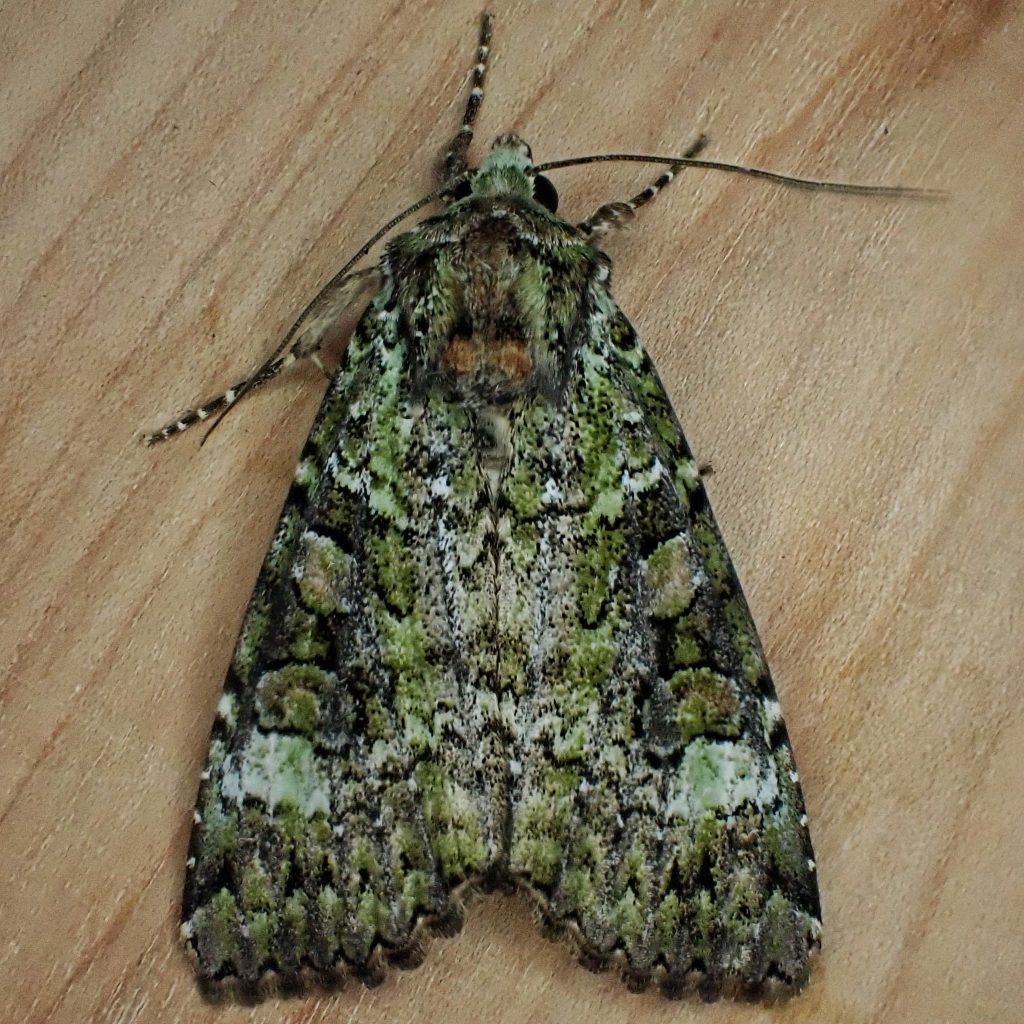
This beautiful Noctuid moth is another one that, like the Ecliptopera silaceata that I recently profiled, ranges throughout the temperate parts of the northern Northern Hemisphere, and thus must’ve survived as a species for at least 80 million years! And it has done so relatively unchanged, since populations on those 3 continents are still genetically and morphologically virtually identical, although the coloring does vary. Now that is a successful species!
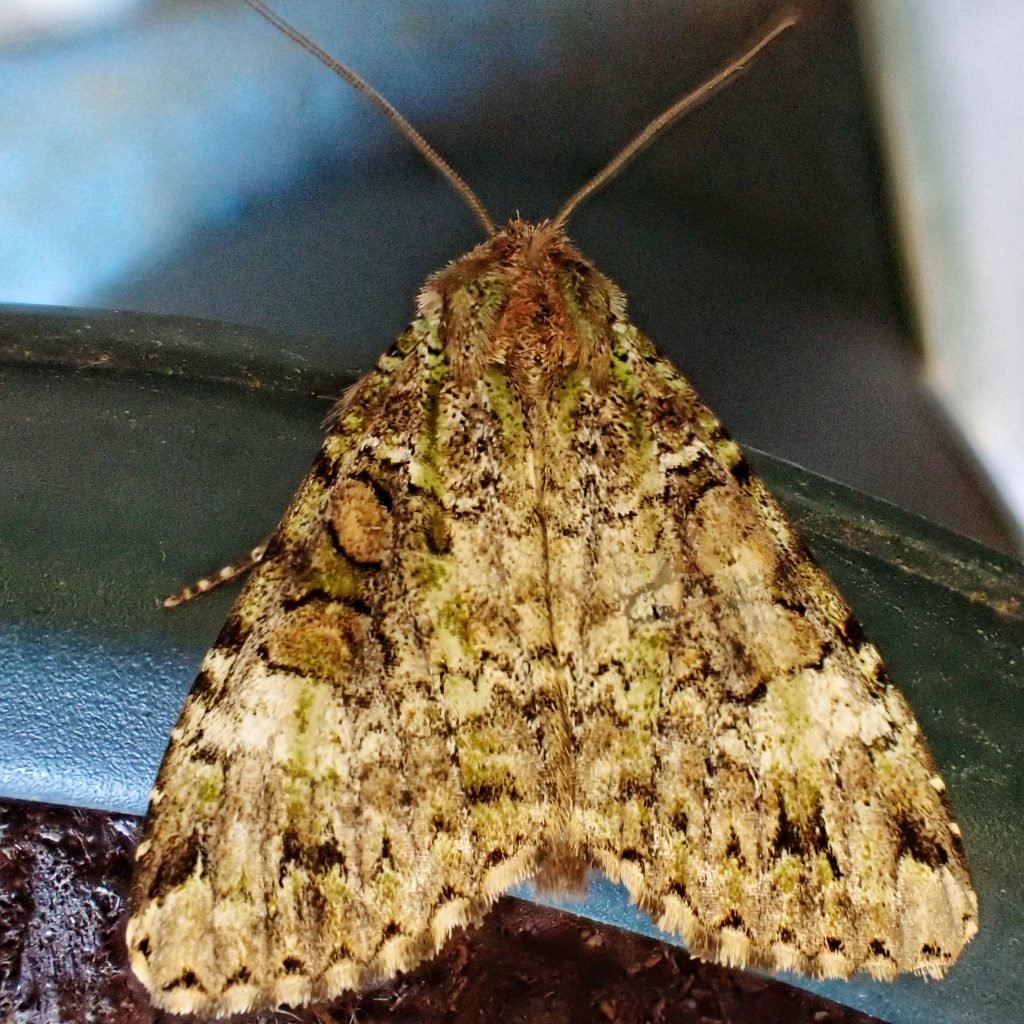
Rather than focus on a nearly ubiquitous group of plants like the willowherbs, as E. silaceata does, the Green Arches Moth exploits many different species, and has an extended flight period so that eggs can always be laid on a plant that has leaves of prime nutritional value. The longer flight season also allows the adults to move further afield, to recolonize areas that may have incurred a population deficit.
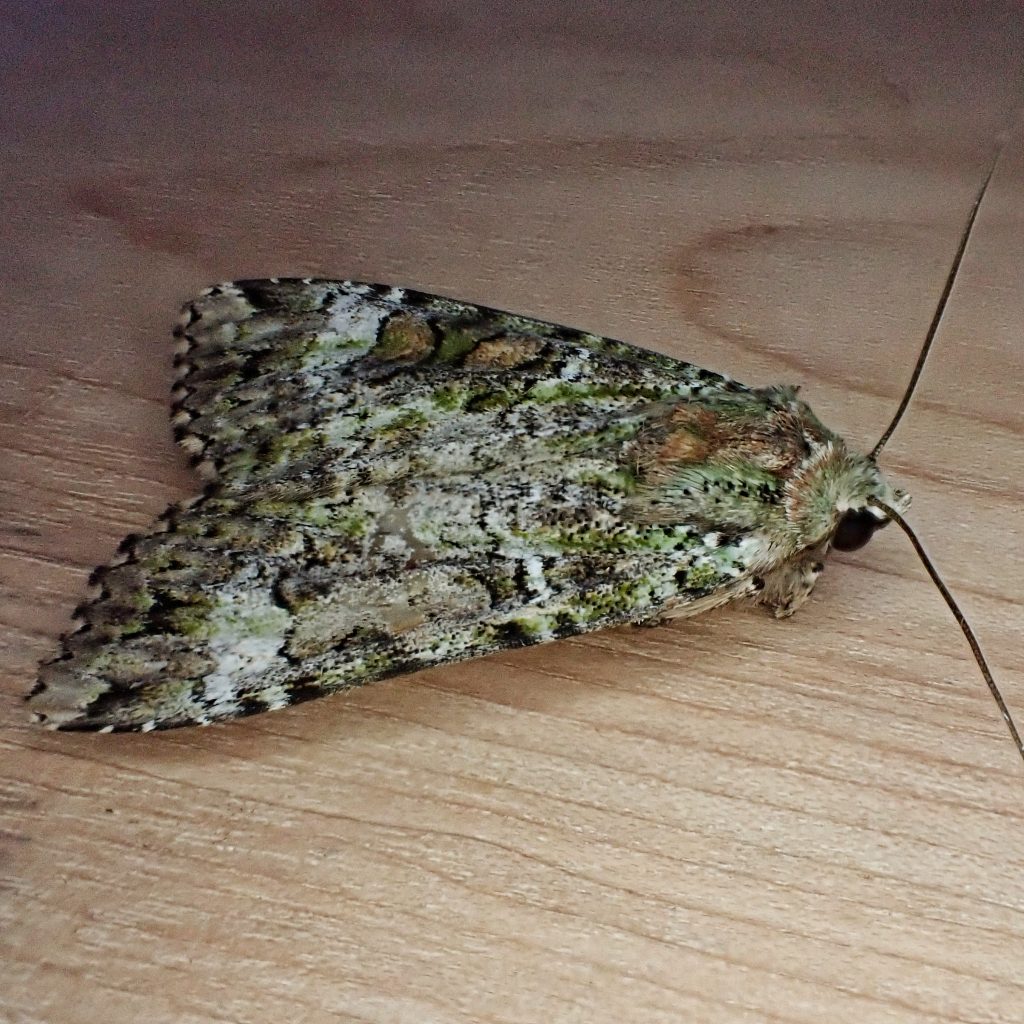
Despite the fact that I find them to be rather spectacular, their bold but mottled coloring is actually a very effective camouflage on mossy and lichened tree trunks. The larvae don’t blend in as well while feeding on leaves, and thus utilize the cloak of darkness by being nocturnal. Since they overwinter as larvae in cold climates they must use some sort of anti-freezing technique, but I can’t seem to find any information on what that might be.
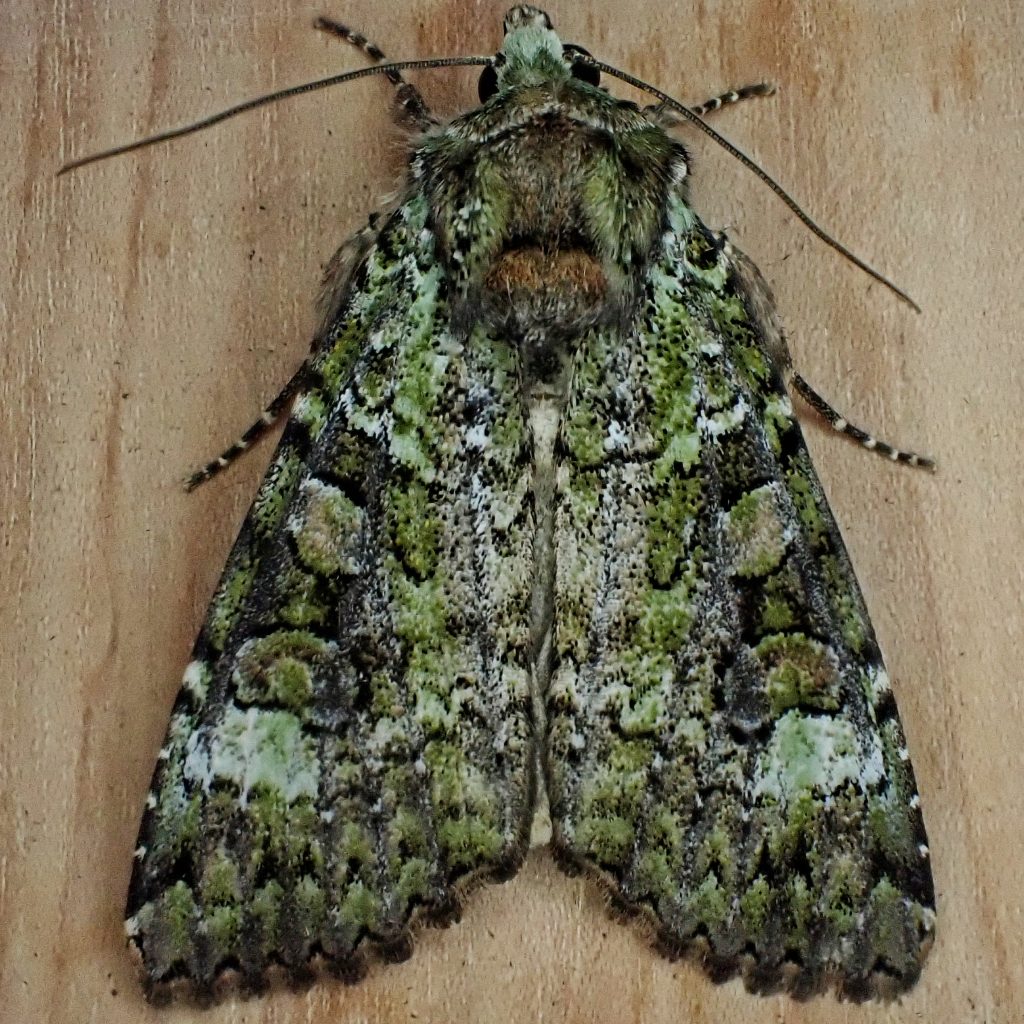
Description-Large (fw length 22-26mm) moth, with olive green, grey, and yellowish brown mottling, black transverse lines, and a large whitish patch between the reniform spot and the post medial line; antemedial and postmedial lines are doubled, scalloped, and filled with lighter scales; orbicular spot is oval and usually open on the costa side, the reniform spot is large, and both are filled with grey green to reddish brown.
Similar species–A. pressus are smaller and lack the whitish patch below the reniform spot.
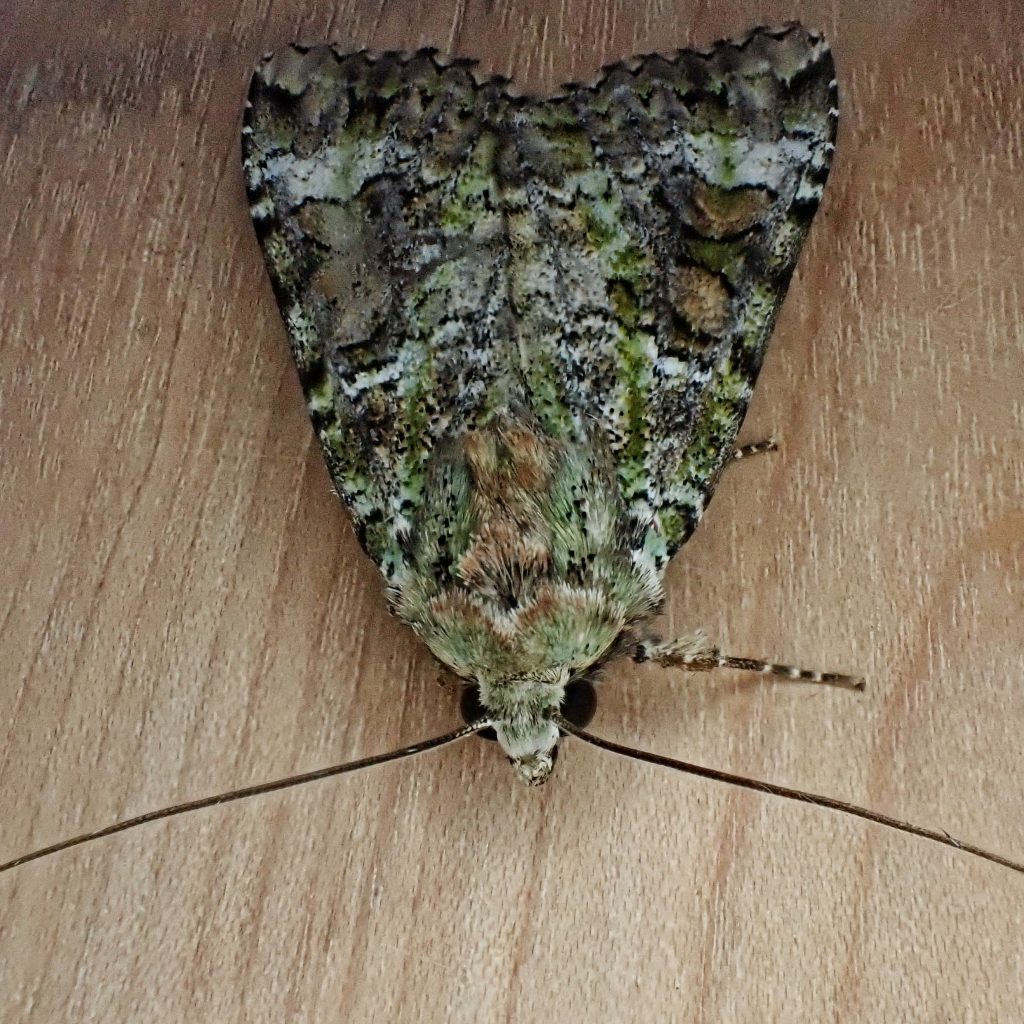
Habitat-Deciduous woodland and mixed forests up to high elevations.
Range-Northern Northern Hemisphere; found west of the eastern foothills of the Cascades from Lane County northward, and in the Rockies, Wallowas, and Blues.
Eats-Larvae are generalists, and feed on the leaves of a variety of shrubs and deciduous trees.
Eaten by-Insectivores of all classes
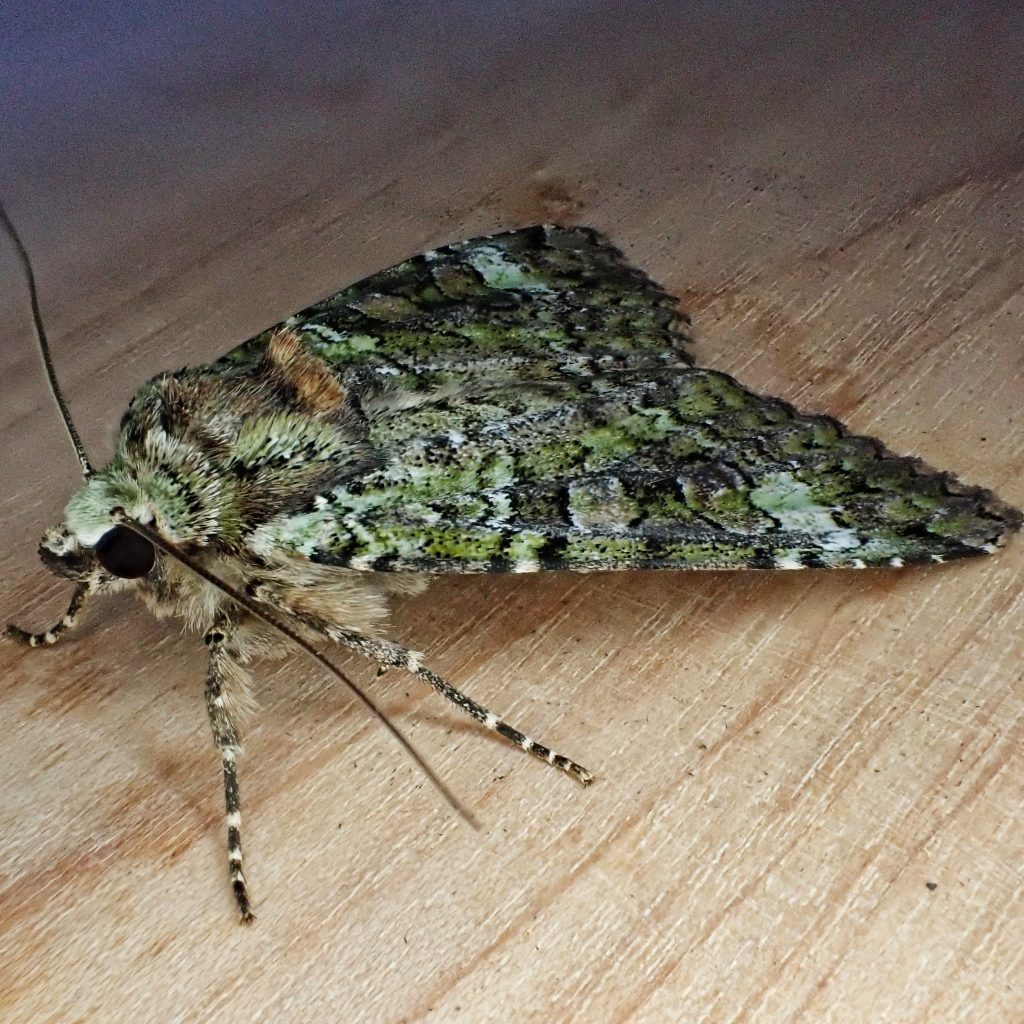
Reproduction-Univoltine; overwinters as a larvae.
Adults active-June through September
Etymology of names–Anaplectoides has a complicated etymology. First was the genus Aplecta (now defunct because it was a junior synonym of Polia), from the Greek for not folded, referring to the forewings being held flat at rest, in contrast to the genus Euplexia which has a longitudinal pleat in the forewing when at rest. Then came the genus Aplectoides, which means ‘similar in form to Aplecta’. And finally Anaplectoides, from the Greek for ‘not Aplectoides, but related’. Like I said, complicated. However, the specific epithet prasina is very straightforward, being Greek for ‘leek green’, and referring to the dominant color of the forewings.
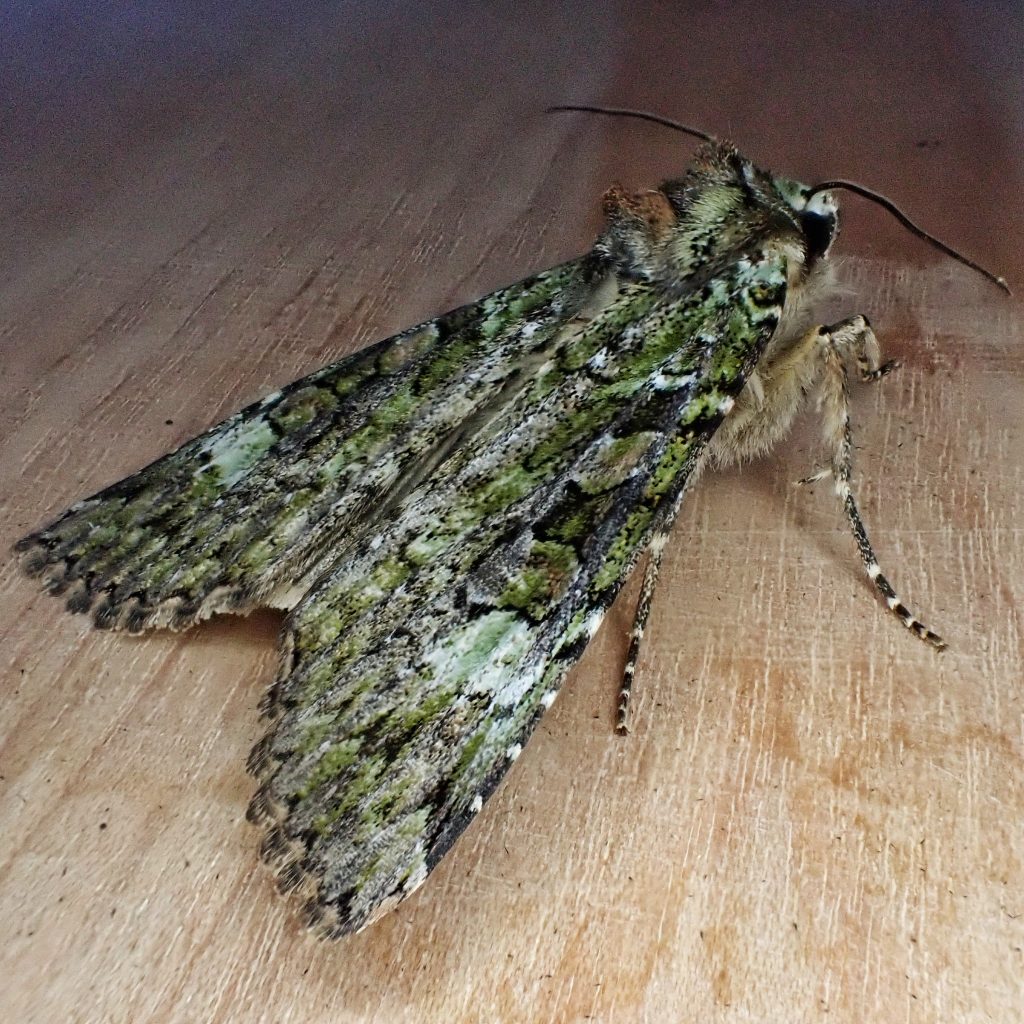
https://bugguide.net/node/view/25450
http://mothphotographersgroup.msstate.edu/species.php?hodges=11000
https://projects.biodiversity.be/lepidoptera/species/5411/
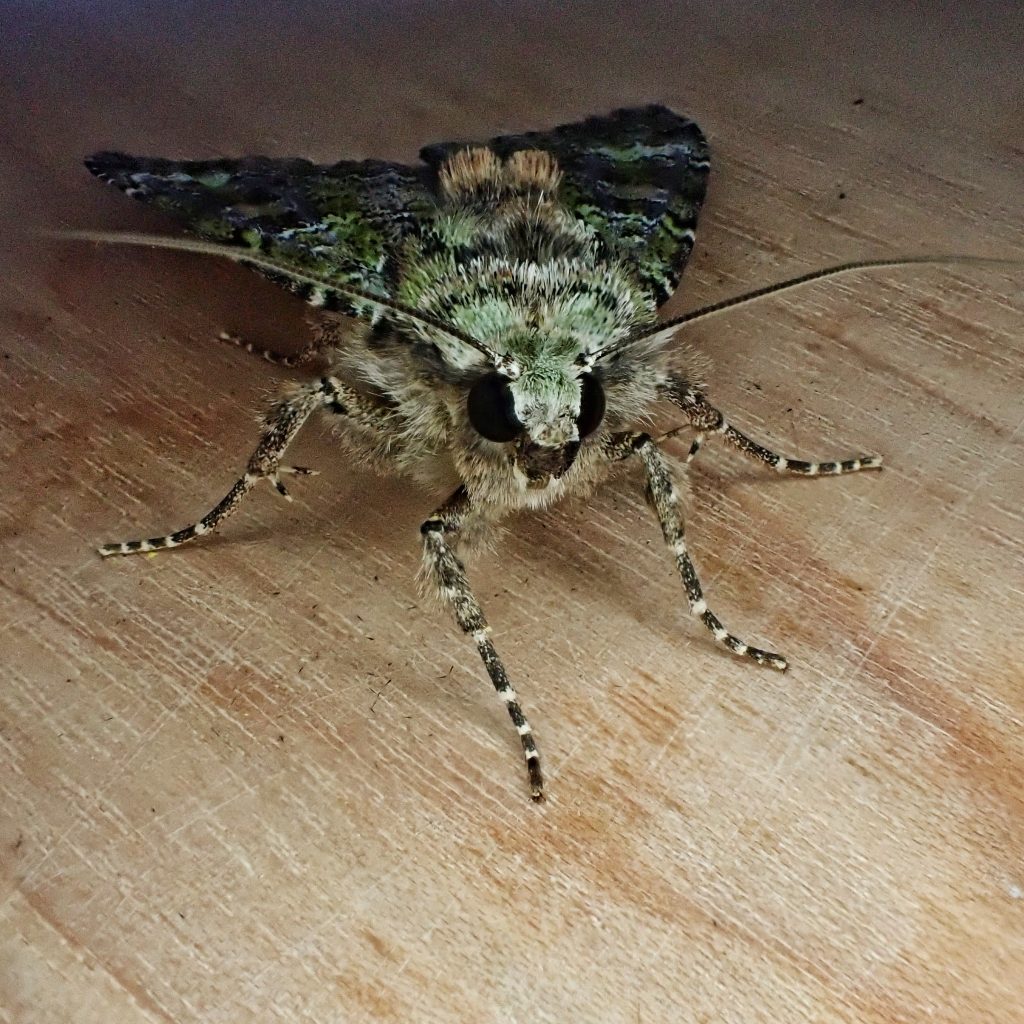
3 thoughts on “Anaplectoides prasina (Green Arches Moth)”